This article was co-authored by Chris M. Matsko, MD. Dr. Chris M. Matsko is a retired physician based in Pittsburgh, Pennsylvania. With over 25 years of medical research experience, Dr. Matsko was awarded the Pittsburgh Cornell University Leadership Award for Excellence. He holds a BS in Nutritional Science from Cornell University and an MD from the Temple University School of Medicine in 2007. Dr. Matsko earned a Research Writing Certification from the American Medical Writers Association (AMWA) in 2016 and a Medical Writing & Editing Certification from the University of Chicago in 2017.
There are 12 references cited in this article, which can be found at the bottom of the page.
wikiHow marks an article as reader-approved once it receives enough positive feedback. In this case, 95% of readers who voted found the article helpful, earning it our reader-approved status.
This article has been viewed 170,289 times.
Your body uses potassium to do everything from maintaining fluid balances to keeping your brain and heart functioning as they're meant to.Despite the wide availability of potassium-rich foods, many people commonly receive as little as half of their daily suggested intake of potassium. By understanding the symptoms of a potassium deficiency and knowing the safest ways to boost your daily potassium intake, you can easily treat your own low potassium levels.
Steps
Recognizing Signs of Low Potassium
-
1Look for symptoms of low potassium levels. Having either too much or too little potassium in your blood can lead to health complications. Having a low level of potassium in your blood is called hypokalemia.Effects of hypokalemia can include weak muscles, an abnormal heart rhythm, and a slight rise in blood pressure. Additional symptoms can include:[1]
- Constipation
- Fatigue
- Muscle spasms
- Muscle tingling or numbness
-
2Look for common causes of low potassium levels. Several common and not so common health-related occurrences can contribute to low potassium levels. You have suffer a drop in potassium levels due to:[2]
- Taking antibiotics
- Experiencing diarrhea or vomiting
- Experiencing high levels of sweating
- Using too many laxatives
- Suffering from chronic kidney disease
- Using diuretic medicines (water pills) to treat heart failure and high blood pressure
- Suffering from an eating disorder
- Having low levels of magnesium
Advertisement -
3Watch for signs of hyperkalemia. Hyperkalemia is the presence of too much potassium in your blood. The condition often has few symptoms, but you may notice nausea, a weak or irregular pulse, or a slow heartbeat to the point of collapse.[3] If you experience any of these symptoms in association with an increased-potassium diet, then you should see your doctor immediately.
- Your kidneys typically help expel excess potassium through your urine. This makes hyperkalemia more common in those with kidney and other conditions, as well as those with Addison's disease, those taking taking blood pressure drugs, those with hemolytic anemia, and those with certain tumors.[4]
Adding More Potassium to Your Diet
-
1See your doctor. If you suspect that you have low levels of potassium, then you should see your doctor before turning to supplements or other methods of boosting your potassium intake. When straying from a standard diet, you can easily overdo it and end up with too much potassium in your diet. Experts suggest 4,700 mg of potassium a day in a balanced diet.[5] Your doctor will run the appropriate blood tests to determine your actual potassium levels, and he will prescribe the correct course of action for you based on those results.
- In most cases your treatment will involve more potassium-rich foods in your diet.
- Follow your doctor's recommendations closely to avoid introducing too much potassium into your diet.
-
2Allow your potassium levels to rebound naturally. If you recently suffered from the common causes of low potassium, such as diarrhea, vomiting, or sweating due to an illness—or if you recently took a short-term prescription of antibiotics—your potassium levels will most often return to normal as soon as you're well again. Your doctor will likely suggest adding some potassium-rich foods until you're well again rather than taking a potassium supplement.
-
3Add more dairy products to your diet. Dairy products deliver some of the highest sources of potassium you can find in a single serving of food. One cup of yogurt, for instance, contains roughly 579 mg of potassium. One cup of nonfat milk can contain as much as 382 mg of potassium.[6]
- Opt for nonfat options whenever possible since too much full-fat dairy dramatically increases your daily calorie intake.
- Do not turn to dairy options if you are lactose intolerant. You can still find plenty of potassium from other sources.
-
4Eat more high-potassium fruits. Select fruits are great sources of potassium. Make sure you choose a potassium-rich fruit, though, because not all fruits are created equal in this regard. Fruits high in potassium include:[7]
- 422 mg in a medium-size banana
- 390 mg in half of a papaya
- 378 mg in three average apricots
- 368 mg in one cup of cantaloupe
- 355 mg in 3/4 cup of orange juice
- 273 mg in 1/4 cup raisins
- 254 mg in one cup of strawberries
-
5Add more vegetables that are high in potassium. Fruits aren't the only potassium-rich options. You can also get plenty of potassium in several common vegetables. Some of the best varieties include:[8]
- 925 mg in a medium-size baked potato with the skin (610 mg without the skin)
- 694 mg in a large sweet potato
- 517 mg in 3/4 cup of carrot juice
- 448 mg in 1/2 cup of winter squash
- 419 mg in 1/2 cup of spinach
- 417 mg in 3/4 cup of tomato juice (or 300 mg in a large tomato)
- 312 mg in one stalk of celery
- 278 mg in 1/2 cup of broccoli
- 267 mg in 1/2 cup of beets
-
6Add more meat that is rich in potassium. Though not as much as some other options, you can still find a decent amount of potassium in several meat sources. The amount of potassium in a three-ounce serving of common meat options is:[9]
- 383 mg in chicken
- 290 mg in beef
- 259 mg in lamb
- 250 mg in dark meat turkey
-
7Eat seafoods that are a good source of potassium. Fish is also a good source of potassium. For a three-ounce serving of fish, you can find:[10]
- 484 mg in canned salmon or tuna
- An average of 375 mg in most other varieties of fish
-
8Add high-potassium nuts and legumes. Many varieties of nuts and legumes are also good sources of potassium. Additionally, they're often great sources of protein, fiber, and other minerals. High-potassium options include:[11]
- 400 mg in 1/2 cup of cooked pinto beans
- 365 mg in 1/2 cup of cooked lentils
- 340 mg in 1/2 cup of unsold nuts
- 241 mg in 1/4 cup of sunflower seeds
- 208 mg in two tbsp. of peanut butter
-
9Use molasses in recipes. Though not an ingredient people often use (and an unexpected source of nutrients), molasses contains 498 mg of potassium in one tbsp.[12] Drizzled onto yogurt, oatmeal, of used in smoothies is a great way to easily add the potassium boost of molasses to some common food items.[13]
-
10Learn which foods are low in potassium. In addition to focusing on high-potassium foods, you should also know the common foods that are low in potassium. Some of these options are still very healthy, but if potassium is your focus, then they do not make good choices. Low-potassium foods include:[14] [15]
- 0 mg in black olives (also very high source of sodium)
- 3 mg in one tbsp. of butter
- 20-30 mg in one ounce of cheese
- 45 mg in three ounces of bacon (also a very high source of sodium)
- 50 mg in 1/2 cup of blueberries
- 55 mg in one egg
- 69 mg in one slice of bread
- 72 mg in ten medium grapes
- 81 mg in 3/4 cup of pasta
- 90 mg in 1/2 cup of applesauce
- 100 mg in 1/4 cup of corn
Using Medical Treatments
-
1Talk to your doctor about potassium replacement therapy. One of the biggest risks associated with low potassium is arrhythmia, or irregular heart beat. Older adults and those with preexisting heart disease are at higher risk for arrhythmia. If your doctor suspects you have severe low potassium, he may run tests to rule out other conditions, such as renal tubular acidosis, Cushing syndrome, and hypocalcemia, and confirm your diagnosis.[16]
- Your doctor may run blood tests to check your electrolyte, glucose, magnesium, calcium, and phosphorous levels.
- If you are taking heart medication already, such as a digitalis meant to strengthen your heart, your doctor will wan to check your digoxin levels.
- Your doctor may also order an EKG to detect any irregularities in your heartbeat.
-
2Get IV potassium replacement therapy. If your doctor confirms you have severely low potassium, arrhythmia, or severe symptoms your doctor will likely give you potassium intravenously.[17] The potassium will be administered very slowly, under the observation of a doctor, to make sure it does not affect your heart.[18]
- IV therapy may be very irritating at the site of injection.
-
3Take potassium in pill or liquid form. You will take most potassium supplements orally in the form of either pills, liquids, or powders.[19] Many multivitamins also contain potassium. Ensure that you follow the dosage your doctor has prescribed without going over or under the dosage. This will ensure consistently healthy potassium blood levels.
- Since it's possible for your diet to have too much potassium, you should consult your doctor before adding supplements to your daily regimen. This will likely entail some blood tests to determine how much additional potassium you actually need in your diet.
- Doctors commonly prescribe potassium supplements at the same time as another medication that can deplete potassium levels.[20] If your doctor puts you on one of these medications, then she may suggest potassium supplements even if your current levels are within range.
-
4Follow up with your doctor. Your doctor will want to run follow-up tests, checking your potassium levels and checking that her prescribed treatment is working. The follow up will likely be two to three days following your initial treatment.[21]
Expert Q&A
-
QuestionHow long will it take to raise my potassium?
 Chris M. Matsko, MDDr. Chris M. Matsko is a retired physician based in Pittsburgh, Pennsylvania. With over 25 years of medical research experience, Dr. Matsko was awarded the Pittsburgh Cornell University Leadership Award for Excellence. He holds a BS in Nutritional Science from Cornell University and an MD from the Temple University School of Medicine in 2007. Dr. Matsko earned a Research Writing Certification from the American Medical Writers Association (AMWA) in 2016 and a Medical Writing & Editing Certification from the University of Chicago in 2017.
Chris M. Matsko, MDDr. Chris M. Matsko is a retired physician based in Pittsburgh, Pennsylvania. With over 25 years of medical research experience, Dr. Matsko was awarded the Pittsburgh Cornell University Leadership Award for Excellence. He holds a BS in Nutritional Science from Cornell University and an MD from the Temple University School of Medicine in 2007. Dr. Matsko earned a Research Writing Certification from the American Medical Writers Association (AMWA) in 2016 and a Medical Writing & Editing Certification from the University of Chicago in 2017.
Family Medicine Physician It takes some time for your potassium to recover if it is low. Do not expect it to increase overnight. You have to eat food high in potassium regularly for there to be a noticeable difference.
It takes some time for your potassium to recover if it is low. Do not expect it to increase overnight. You have to eat food high in potassium regularly for there to be a noticeable difference. -
QuestionHow do I improve my potassium levels?
 Chris M. Matsko, MDDr. Chris M. Matsko is a retired physician based in Pittsburgh, Pennsylvania. With over 25 years of medical research experience, Dr. Matsko was awarded the Pittsburgh Cornell University Leadership Award for Excellence. He holds a BS in Nutritional Science from Cornell University and an MD from the Temple University School of Medicine in 2007. Dr. Matsko earned a Research Writing Certification from the American Medical Writers Association (AMWA) in 2016 and a Medical Writing & Editing Certification from the University of Chicago in 2017.
Chris M. Matsko, MDDr. Chris M. Matsko is a retired physician based in Pittsburgh, Pennsylvania. With over 25 years of medical research experience, Dr. Matsko was awarded the Pittsburgh Cornell University Leadership Award for Excellence. He holds a BS in Nutritional Science from Cornell University and an MD from the Temple University School of Medicine in 2007. Dr. Matsko earned a Research Writing Certification from the American Medical Writers Association (AMWA) in 2016 and a Medical Writing & Editing Certification from the University of Chicago in 2017.
Family Medicine Physician If you consume some of the foods that are listed in this article, this will help you increase your potassium levels naturally. If you are hospitalized they may have to give you an IV with potassium in it, but this is worse case scenario.
If you consume some of the foods that are listed in this article, this will help you increase your potassium levels naturally. If you are hospitalized they may have to give you an IV with potassium in it, but this is worse case scenario.
Warnings
- Use caution when self-prescribing potassium. It is possible to have too much potassium in your body, which carries its own load of health problems and side effects, including a variety of heart problems. People with kidney disease should not take potassium without a doctor's supervision.[22]⧼thumbs_response⧽
References
- ↑ http://www.nlm.nih.gov/medlineplus/ency/article/000479.htm
- ↑ http://www.nlm.nih.gov/medlineplus/ency/article/000479.htm
- ↑ http://www.nlm.nih.gov/medlineplus/ency/article/001179.htm
- ↑ http://www.nlm.nih.gov/medlineplus/ency/article/001179.htm
- ↑ https://ods.od.nih.gov/factsheets/Potassium-HealthProfessional/
- ↑ https://louisville.edu/medicine/departments/familymedicine/files/Potassium%20Food%20List.pdf
- ↑ http://www.drugs.com/cg/potassium-content-of-foods-list.html
- ↑ http://www.drugs.com/cg/potassium-content-of-foods-list.html
- ↑ https://extension.colostate.edu/topic-areas/nutrition-food-safety-health/potassium-and-the-diet-9-355/
- ↑ https://extension.colostate.edu/topic-areas/nutrition-food-safety-health/potassium-and-the-diet-9-355/
- ↑ https://extension.colostate.edu/topic-areas/nutrition-food-safety-health/potassium-and-the-diet-9-355/
- ↑ https://extension.colostate.edu/topic-areas/nutrition-food-safety-health/potassium-and-the-diet-9-355/
- ↑ http://www.organicauthority.com/health/how-and-why-to-use-molasses.html
- ↑ https://www.hsph.harvard.edu/nutritionsource/potassium/
- ↑ http://www.drugs.com/cg/potassium-content-of-foods-list.html
- ↑ http://www.emedicinehealth.com/low_potassium/page4_em.htm#low_potassium_diagnosis
- ↑ http://www.emedicinehealth.com/low_potassium/page5_em.htm
- ↑ http://www.emedicinehealth.com/low_potassium/page5_em.htm
- ↑ http://www.mayoclinic.org/drugs-supplements/potassium-supplement-oral-route-parenteral-route/description/drg-20070753
- ↑ http://www.mayoclinic.org/drugs-supplements/potassium-supplement-oral-route-parenteral-route/description/drg-20070753
- ↑ http://www.emedicinehealth.com/low_potassium/page5_em.htm
- ↑ https://www.kidneyfund.org/living-kidney-disease/health-problems-caused-kidney-disease/high-potassium-hyperkalemia-causes-prevention-and-treatment
About This Article
To treat low potassium in blood levels, start by adding plenty of potassium-rich foods to your daily diet, such as nonfat dairy products, bananas, papayas, potatoes, and spinach. Chicken, tuna, and legumes, like pinto beans, are also great sources of potassium. Aim to consume about 4,700 mg of potassium per day in a balanced diet for the best results. If dietary changes aren't improving your potassium levels, you can also talk to your doctor about other treatment options, like potassium replacement therapy and potassium supplements. To learn more about potassium-rich food sources, read on!


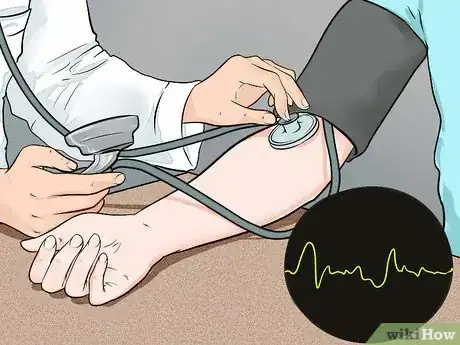


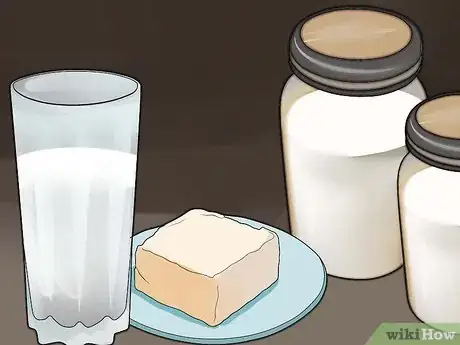
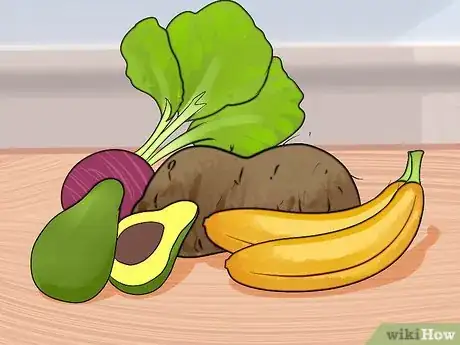
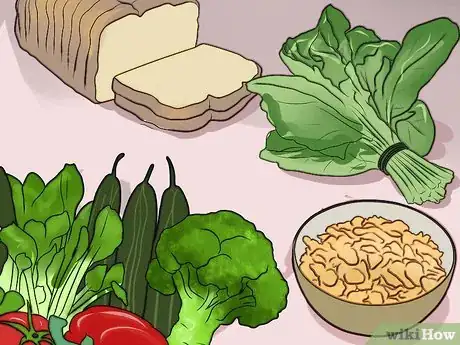
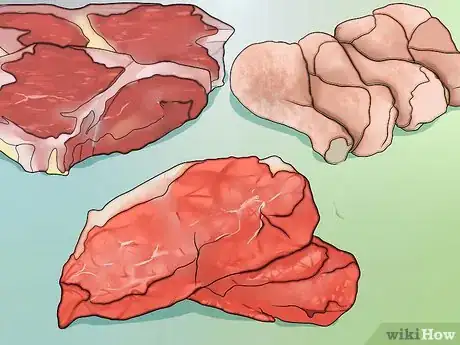

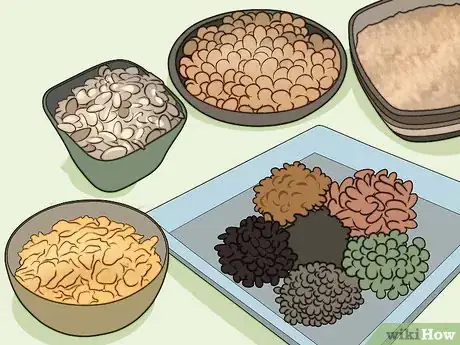
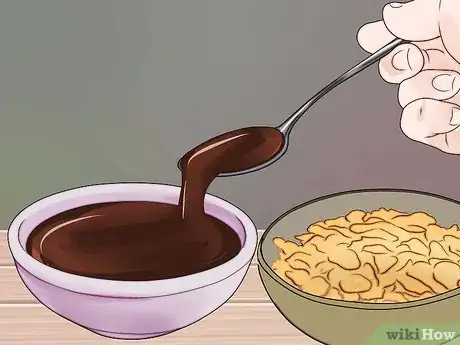


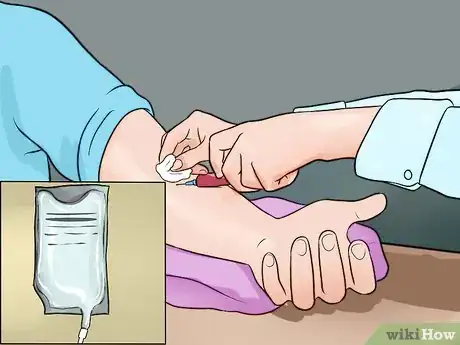
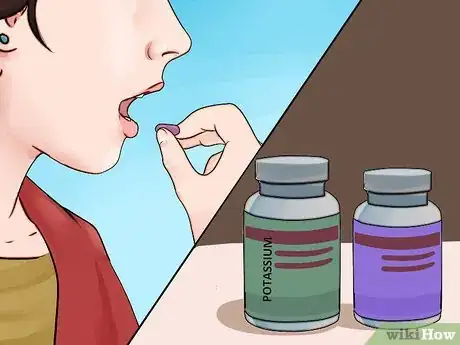






-Step-14-Version-2.webp)

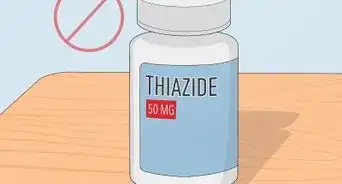


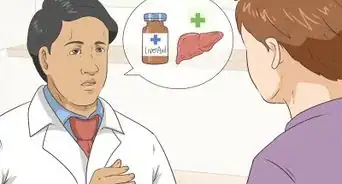















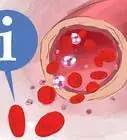
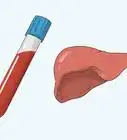



































Medical Disclaimer
The content of this article is not intended to be a substitute for professional medical advice, examination, diagnosis, or treatment. You should always contact your doctor or other qualified healthcare professional before starting, changing, or stopping any kind of health treatment.
Read More...